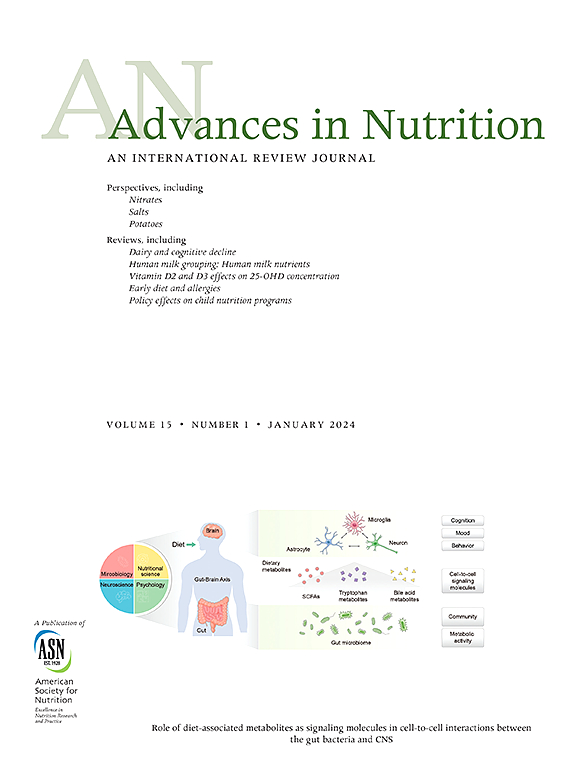xenomir和人类健康的难题。
IF 9.2
1区 医学
Q1 NUTRITION & DIETETICS
引用次数: 0
摘要
MicroRNAs (miRNAs)是在动物和植物中参与转录后基因调控的小的非编码rna。来自可食用植物的mirna,被称为xenomir,被认为可以跨越界屏障并调节哺乳动物的基因表达。然而,由于关于哺乳动物中xenomiR的稳定性、生物利用度和功能的许多不一致和相互矛盾的证据,这种饮食假说仍然存在争议。尽管有令人鼓舞的发现,包括植物来源的mirna在体外和动物模型中影响哺乳动物基因表达的报道,但在人类身上的证据仍然没有定论。一些独立的调查报告了相互矛盾的发现,强调在鉴定和验证异种基因组从植物到哺乳动物的转移方面缺乏可重复性,这引起了对一些结果的稳健性、可靠性和生物学意义的担忧。此外,目前没有直接的分子证据表明植物xenomir与哺乳动物的沉默机制结合。虽然植物衍生异种基因组的概念具有巨大的潜力,但未来的研究必须解决尚未解决的技术和生物学限制。如果得到验证,这一假设可能代表了通过精准医学和个性化营养饮食干预表观遗传调节的新途径。这篇全面的叙述性综述批判性地提供了膳食xenomiR假说的概述,特别关注那些来自可食用植物的假说。我们总结了目前关于xenomiR跨界通信潜力的证据,并讨论了阻碍其验证的技术和生物学挑战。我们还探讨了一种推测但似乎合理的情况,即膳食mirna可能局部作用于微生物群而不是系统。意义声明:这篇综述提供了一个及时和关键的膳食xenomiR假说的综合,解决了与跨界交流相关的支持数据和解释,围绕这一现象的持续争议,以及缺乏这些外源性mirna如何影响人类健康和疾病的机制见解。它强调了尚未解决的方法论挑战,并为未来的机制研究提供了明确的方向,以推进这一有争议的领域。本文章由计算机程序翻译,如有差异,请以英文原文为准。
The Conundrum of XenomiRs and Human Health
MicroRNAs (miRNAs) are small, noncoding RNAs involved in posttranscriptional gene regulation in both animal and plant. miRNAs derived from edible plants, referred to as xenomiRs, are proposed to cross-kingdom barriers and to modulate mammalian gene expression. However, this dietary xenomiR hypothesis remains controversial, given numerous inconsistencies and conflicting evidence regarding stability, bioavailability, and functionality of xenomiRs in mammals. Despite promising findings, including reports of plant-derived miRNAs influencing mammalian gene expression in vitro and in animal models, evidence remains inconclusive in humans. Several independent investigations have reported contradictory findings, emphasizing reproducibility lack in identifying and validating the transfer of xenomiRs from plants to mammals, which has raised concerns about the robustness, reliability, and biological significance of some results. Additionally, no direct molecular evidence currently demonstrates that plant xenomiRs bind to mammalian silencing machinery. Although the concept of plant-derived xenomiRs holds significant potential, future research must address unresolved technical and biological limitations. If validated, this hypothesis may represent a novel avenue for epigenetic modulation through dietary intervention in precision medicine and personalized nutrition. This comprehensive narrative review critically provides an overview of the dietary xenomiR hypothesis, specifically focusing on those derived from edible plants. We summarize the current evidence regarding xenomiR cross-kingdom communication potential, and we discuss technical and biological challenges that impede their validation. We also explore the speculative yet plausible scenario that dietary miRNAs may act locally on the microbiota rather than systemically.
求助全文
通过发布文献求助,成功后即可免费获取论文全文。
去求助
来源期刊

Advances in Nutrition
医学-营养学
CiteScore
17.40
自引率
2.20%
发文量
117
审稿时长
56 days
期刊介绍:
Advances in Nutrition (AN/Adv Nutr) publishes focused reviews on pivotal findings and recent research across all domains relevant to nutritional scientists and biomedical researchers. This encompasses nutrition-related research spanning biochemical, molecular, and genetic studies using experimental animal models, domestic animals, and human subjects. The journal also emphasizes clinical nutrition, epidemiology and public health, and nutrition education. Review articles concentrate on recent progress rather than broad historical developments.
In addition to review articles, AN includes Perspectives, Letters to the Editor, and supplements. Supplement proposals require pre-approval by the editor before submission. The journal features reports and position papers from the American Society for Nutrition, summaries of major government and foundation reports, and Nutrient Information briefs providing crucial details about dietary requirements, food sources, deficiencies, and other essential nutrient information. All submissions with scientific content undergo peer review by the Editors or their designees prior to acceptance for publication.
 求助内容:
求助内容: 应助结果提醒方式:
应助结果提醒方式:


